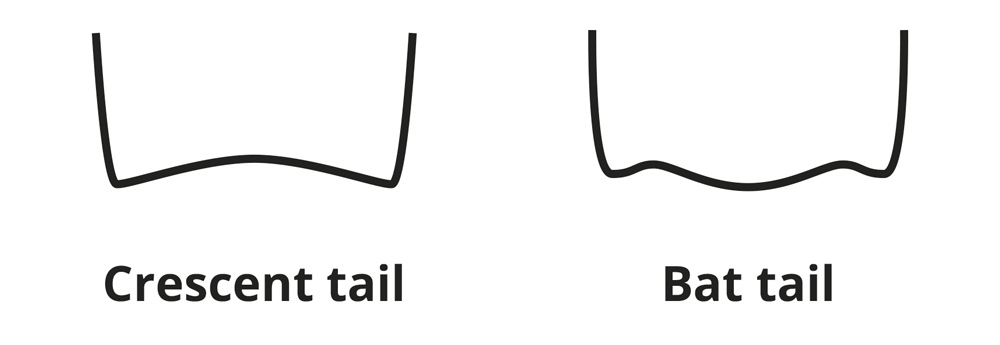Purchasing a Bodyboard

When you're prepared to purchase a bodyboard, there are various factors you must take into account. The following is a clear and organized guide on the vital aspects to consider.
1. Selecting the Core
The core represents the fundamental material composing the board's body. It's crafted from foam and can come in three variations: ESP, PE, and PP. Each variation possesses unique characteristics related to water temperature, wave size, dimensions of the rider, skill level, etc. Below is a quick comparison of these types.
ESP - Expanded Polystyrene
- Enables diverse shapes, designs, and distinct flex patterns
- Provides good cushioning for elbows and hips
- More affordable than PE and PP
- Ideal for beginners
- Offers excellent buoyancy and is lightweight
- Less robust than PE and PP, so seek approximately 50-55 mm thickness for added strength
PE - Polyethylene
- The original and most frequently used bodyboard core
- Provides almost instant flex feedback for riders
- Allows enhanced control
- Performs better in cooler water
- Suitable for larger waves
PP - Polypropylene
- An excellent all-purpose board
- Stiffer yet stronger and lightweight compared to PE
- Entirely watertight
- Performs well in warm water conditions
- Ideal for large waves and complex manoeuvres
- Beaded PP offers enhanced flex and buoyancy
- Extruded PP provides rigidity and speed
Flex refers to how much the board bends when under external pressure (e.g., waves) and then springs back. A board with more flex responds better to water conditions, while less flex means it is stiffer yet faster.
2. Selecting the Slicks (Skin)
The slicks, also known as skins, cover the underside of the board, where it makes contact with water. There are two main types: Surlyn Slicks and HDPE Slicks:
- HDPE Slicks are high-density polyethylene slicks; they are durable with low resistance levels and increase speed. The HDPE slick is typically more affordable than Surlyn and often used in beginner models.
- Surlyn Slicks offer a rubber-like surface, giving optimal responsiveness and flexibility, as it can revert to its original shape after pressure is applied. This is the preferred choice among bodyboarders for its higher performance, though it costs more than HDPE.
3. Selecting the Deck
The deck is the top surface you rest upon when surfing waves. You have three choices: PE, XPE, and IXPE. Compare these three in the table below:
PE - Polyethylene
- Provides excellent padding for the rider
- Easier to develop dents as it doesn't revert to its original form
- Soft and flexible
XPE - Cross-linked, Closed Cell
- Highly water-resistant due to its closed structure
- Sleek appearance but demands extra wax for traction
- Feels stiffer compared to PE and IXPE
IXPE - Cross-linked, Open Cell
- Less likely to impair board's flex and recoil
- Extra rigid and strong because of higher density
- Softer than XPE with a coarser feel for superior grip
The choice of deck often boils down to personal preference and riding style, whether you want a softer feel, a more elegant look, or a deck that lasts longer without creasing is entirely your decision.
4. Choosing the Tail Shape
The main tail shapes for bodyboards are Crescent and Bat, both suitable for riders of all levels, largely depending on your preference and the conditions you'll ride in.

- Crescent Tail is versatile for various conditions, offering good wave grip and ease of positioning hips on the board for catching waves or paddling out;
- Bat Tail is advantageous in weaker surf conditions and unpredictable waves due to increased floatation. A better option for heavier riders, it also helps gain speed but can feel looser at the back.
5. Selecting the Size
Choosing the right size board is key for bodyboards. Beyond just height, the size also relies on the type of waves you plan on riding. More control and manoeuvrability come with smaller boards for bigger waves, whereas larger boards aid in floatability during weaker conditions.
Despite that, it is essential that the board fits your height and weight. A board too long will result in your knees contacting the tail when paddling with fins. Conversely, a small board won't offer sufficient floatation. You can adjust buoyancy by opting for wider or narrower boards without altering the board length.
To determine the appropriate board size, measure:
- The height from the ground to your belly button;
- The height from your chin to your knees;
While these measurements may not match exactly, they provide a good range for an appropriate board length.
6. Lastly - The Fins/Flippers
Fins or flippers in bodyboarding go beyond being mere accessories; they are essential. Uniquely designed, these fins differ from regular swimming fins. Bodyboarding fins are typically shorter, wider, and stiffer to enable rapid acceleration to catch waves and assist in manoeuvres without obstruction.
Though there are diverse styles in materials and shapes, the key aspect is to choose bodyboard-specific fins that are comfortable and fit well.
Hit the Waves!
With these basics in mind for selecting your board, you can now search for and find the perfect one for you. Should you have more questions or require further information, feel free to contact us.
